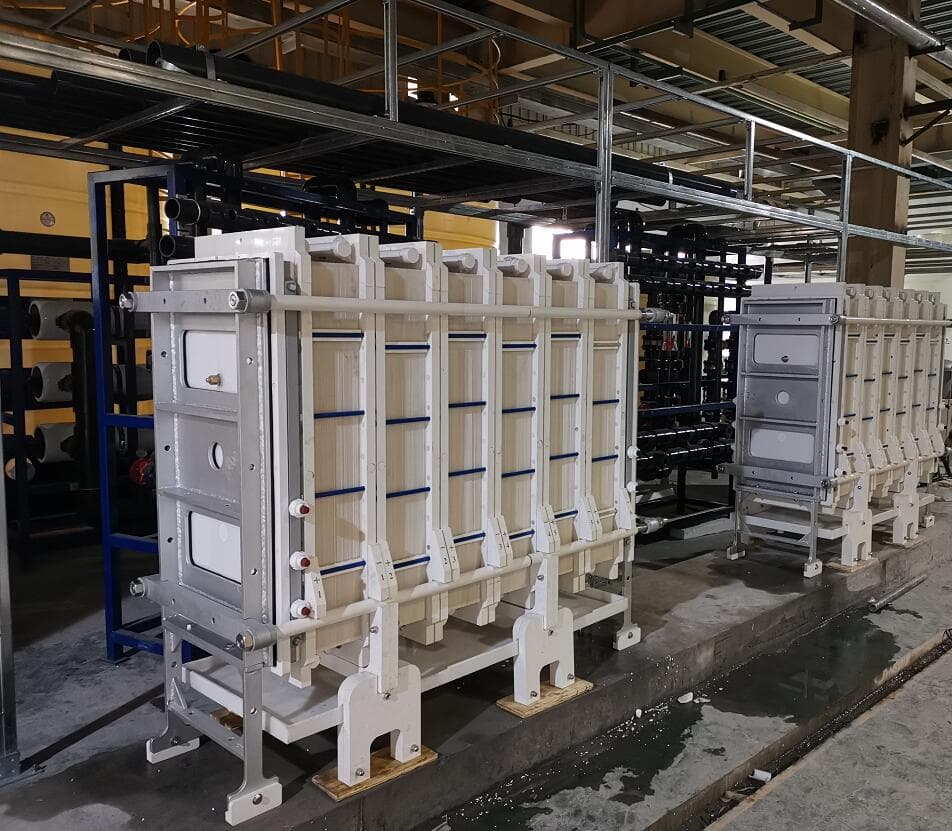
Electrodialysis is a separation technology utilizing electrophoresis of ionic substances in solutions and the selective permeability of ion exchange membranes to separate ionic substances in aqueous solution, enabling efficient desalination, concentration, refining and recovery. There are two types of ion exchange membranes. Cation exchange membrane selectively allows cation permeation and anion exchange membrane selectively allows anion permeation. In an electrodialyzer, a large number of these membranes are arranged alternately between two electrodes and direct current is applied to separate ions in solution. A physicochemical process that separates solute from water by using the potential difference as a driving force and utilizing the selective permeability of the anion and cation exchange membranes to the anion and the cation. It can realize the desalination of brackish water or seawater, salt concentration, desalting and refining of organic solution.
In electrodialysis, there are a cation exchange membrane that allows only cations to pass through and an anion exchange membrane that allows only anions to pass through, and the two ion exchange membranes are alternately arranged to constitute a desalination chamber and a concentration chamber. The electrodialysis membrane assembly is composed of a main component such as a separator, an ion exchange membrane, an electrode, and a clamping device.
Characteristics of Electrodialysis Membrane Stack
- High selectivity to the separated components;
- low energy consumption and low engineering investment;
- continuous operation, high degree of automation;
- The concentration of salt is higher and the water recovery rate is higher;
- not changing the properties of the solution due to chemical action and thermal degradation;
- No regeneration is required, no chemicals are required, and the pretreatment requirements are low.
Remarks:
1,In order to ensure the stable operation of the device, avoid working in an environment filled with dust and corrosive gas, away from the heat source, the relative humidity is 5~70%, and the ambient temperature is 5~40°C. The membrane organizer stops running, and the interior generally needs to be filled with the solution. If it is not used for a long time, the membrane assembly may be dehydrated due to evaporation or leakage of water, and water is supplied at least once every two months. Do not place any objects on the upper end of the membrane organizer to prevent short circuit or electric shock. When not working, cover the dust cloth.2,The membrane in the membrane stack should always be kept moist;
3,When the system is shut down for a long time, the membrane module should be immersed in the protective liquid to avoid microbial growth. The standard preservation solution contains 1.5% by weight of sodium bisulfite (food grade);
4,Avoid back pressure on the water side of the product at all times.